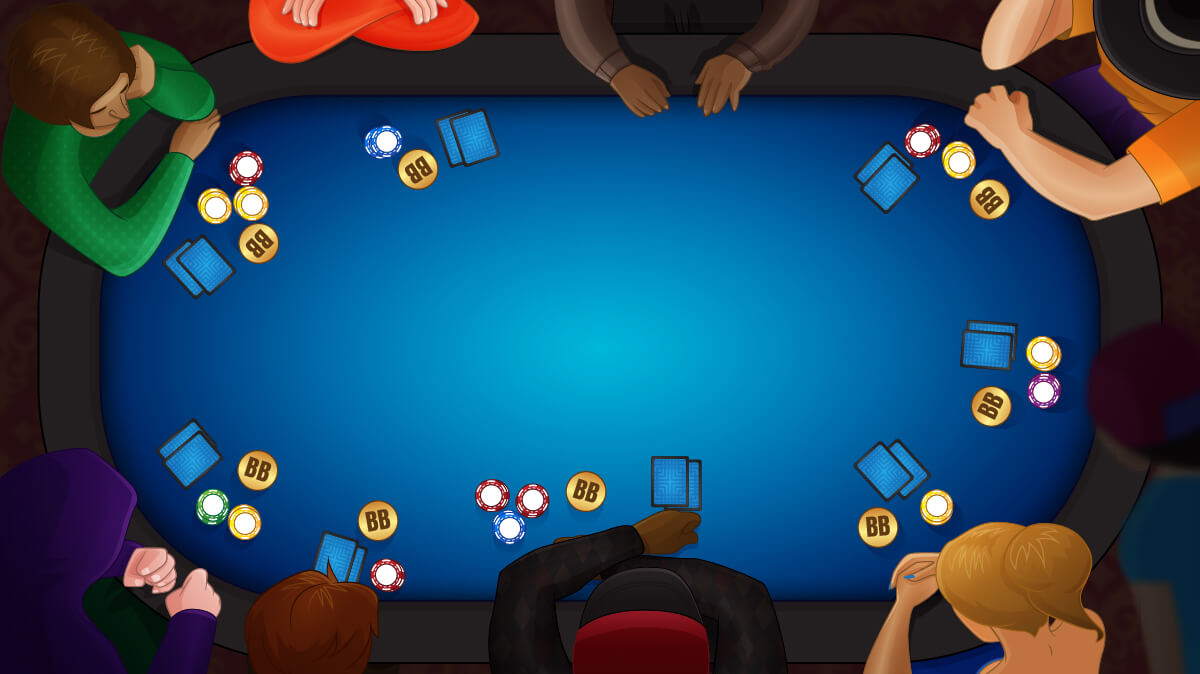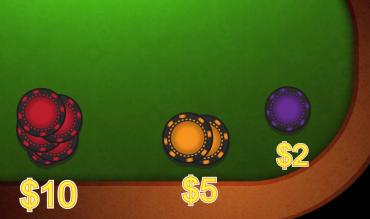It can be a little confusing the first time we run into a straddle playing live poker. But players can view this poker bet as a third blind.
In this article, we will discuss the following -
- What exactly is a straddle?
- What effect does straddling have on the game?
- Should we straddle given the opportunity?
Table of Contents
- What is a poker straddle anyway?
- What effect does poker straddling have?
- Can Poker Straddling Be Profitable?
- Poker straddle variations
- Variations on the sleeper straddle
- Summary of poker straddling
Let’s review the basics.
What Is a Poker Straddle Anyway?
We can define straddle as follows -
“An optional blind bet made preflop in an attempt to generate action”.
Not all straddles follow the same set of rules – there are variants. Whether a casino/poker room will allow particular straddles depends on the house rules. We’ll start by discussing the classic UTG straddle (the most common). We’ll talk about some of the other variants a little later.
Imagine we are playing a $2/$5 game in our local casino - the SB posts $2 and the BB posts $5. Before any hole cards are dealt, UTG announces that he wishes to “poker straddle”.
He places a blind payment of $10 into the pot. We refer to this as a “blind” payment because it’s an action he takes without seeing any hole cards first. Action starts with the player to the left of UTG.
The easiest way of thinking about the poker straddle is as a third blind.
We have the small blind, the big blind, and the bigger blind (straddle).
If players wish to enter the pot, they must at least call $10 preflop. This amount is the size of the bigger blind (i.e. limping is now more expensive).
Many players would even now describe the structure of the game differently: as $2/$5/$10 instead of $2/$5.
What Effect Does Poker Straddling Have?
As the above example shows, straddling changes the stakes we are playing radically. The big blind payment is no longer $5, but $10. The effective stacks must now be thought of differently.
If we buy into a $2/$5 game for $500 we have 100 big blinds. Once a player puts on the $10 straddle, we are now playing a $5/10 game instead of a $2/5 game. We effectively have 50 big blinds in our stack. Thus, we must adjust our poker strategy.
Shallower effective stacks mean that it is going to be correct to stack off significantly wider postflop.
Straddling is hence used as a way to generate action. This scenario is especially true, given that the straddler hasn’t seen his hole-cards. There is an extra $10 in the middle.
This money is invested by a player who could literally have any two cards.
Despite this, many straddlers will be reluctant to fold preflop even if they have trash. They feel invested in the pot after straddling.
Straddling encourages shallow-stacked battles with wide ranges.

Can Poker Straddling Be Profitable?
In short, no, although there are some exceptions.
Most experienced poker players know that their most significant losses come in the blinds. Good blind play involves losing less than our blind investment on average.
But it’s virtually impossible to turn a profit from the SB and BB in the long run. The disadvantage of making a mandatory preflop investment with any two cards is too much of a hurdle.
We shouldn’t be surprised that average loss-rates in the BB are even higher than those in the SB. Why? The mandatory BB payment is larger than the SB payment. So, it stands to reason that our loss-rate in the straddle will be even higher than in the BB.
In other words, the voluntary straddle is a mathematical disaster! We are passing up the opportunity to make a zero-EV fold from UTG and instead adopting a strategy. A play that is more or less guaranteed to make our winrate worse.
Of course, habitual straddlers might be quick to highlight the advantages.
- Firstly, straddling affords us relative position preflop. (Note that the straddle still has the option to raise even if every other player just calls the straddle. It’s hence different from making a 2bb blind raise from UTG.)
- Secondly, straddlers may claim that straddling “loosens up the game”. It makes future orbits juicier and more profitable. While this may be true, such advantages are difficult to quantify. The chances of them being enough to overcome the disadvantage of a blind 2bb preflop investment is remote.
That said, it’s noteworthy to acknowledge that straddling may sometimes be correct for social reasons.
Sometimes a live game may agree to a “round of straddles”. (everyone straddles for one orbit.) It’s not such a big deal to straddle if every other player at the table is voluntarily taking on the same disadvantage.
Besides, we don’t want to be that one guy at the table who ruins the fun.
Poker Straddle Variations
Straddling rules change from casino to casino. For example, while the straddle size is typically 2x the BB, some casinos may allow a straddle bet of any size.
Whether different sizings are permitted, may also depend on the type of straddle. We have thus far considered the classic UTG straddle.
Let’s examine some more types of straddle:
- Mississippi Straddle – The Mississippi straddle is most commonly made by the button. (In fact, some sources say it can only be made on the button. Others say the Mississippi straddle can be used in any position. Assuming the straddle is on the BTN, action starts with the SB. Assuming there is no raise, the straddle (BTN) has the option to raise. (Sometimes players describe a straddle with the option to raise as a “live” straddle).
- Sleeper Straddle – The sleeper straddle can be made from any position. As its name might suggest, this bet is not a “live” straddle. (Although some casinos might treat it as such.) If the action is called or folded around, the straddler does not have the option to raise. Unlike other types of straddle, the sleeper straddle does not buy relative position. The action does not start to the left of the sleeper straddle but instead in the usual place (UTG).
- Re-straddles – Re-straddling (or double-straddling) can be any of the types of straddle discussed so far (assuming allowed by the casino). After the initial straddle is made, a second player may also choose to straddle. For example, with the classic UTG straddle described at the outset, a second player may decide to re-straddle to $20. The stakes would now be $2/$5/$10/$20. But it’s easiest to think of this as an effective $10/$20 game.
Variations on the Sleeper Straddle
Sleeper straddles are not the same across all casinos. It’s important to clarify in your local game.
As an example, in some places a sleeper straddle can be removed from the table if an earlier position player raises. For example, MP places a sleeper straddle and UTG decides to open-raise. MP then has the option to remove his straddle from the table and proceed normally as if no straddle was ever placed. Assuming no call or raise is made before the sleeper straddle, the straddle then functions like a classic EP straddle. No option to raise is given directly to the straddler but he will now act last preflop i.e. he buys relative position.
However, in the sleeper straddle described earlier in the article, the straddler does not gain relative position and does not have the option to remove his straddle from the table under any circumstances. He also only has the option to raise assuming his straddle has already been raised by an earlier position player. Assuming earlier position players either call or fold, the straddler is forced to stick with his straddle amount and does not get an opportunity to raise later unless his straddle gets raised behind.
It’s also possible in some variations of the sleeper straddle that players acting before the sleeper do not have to match the straddle amount. For example, UTG can just limp the bb amount despite the fact that the straddle is potentially 2bb. The straddle is then treated as a raise and the limpers buy relative position (get to act again postflop).
Key takeaway? Ask for precise rules regarding the sleeper straddle in your own game if it’s something that is being implemented. We’ll always have a disadvantage if our opponents know the rules and we don’t.
Summary of Poker Straddling
Here are the key takeaways from this discussion on straddling:
- Learn what your local casino allows and how it works.
- Avoid straddling unless it is socially questionable not to straddle.
- Understand the impact of straddling on effective stacks. (If we are good at playing different effective stack-depths, adjusting should be easy.)


